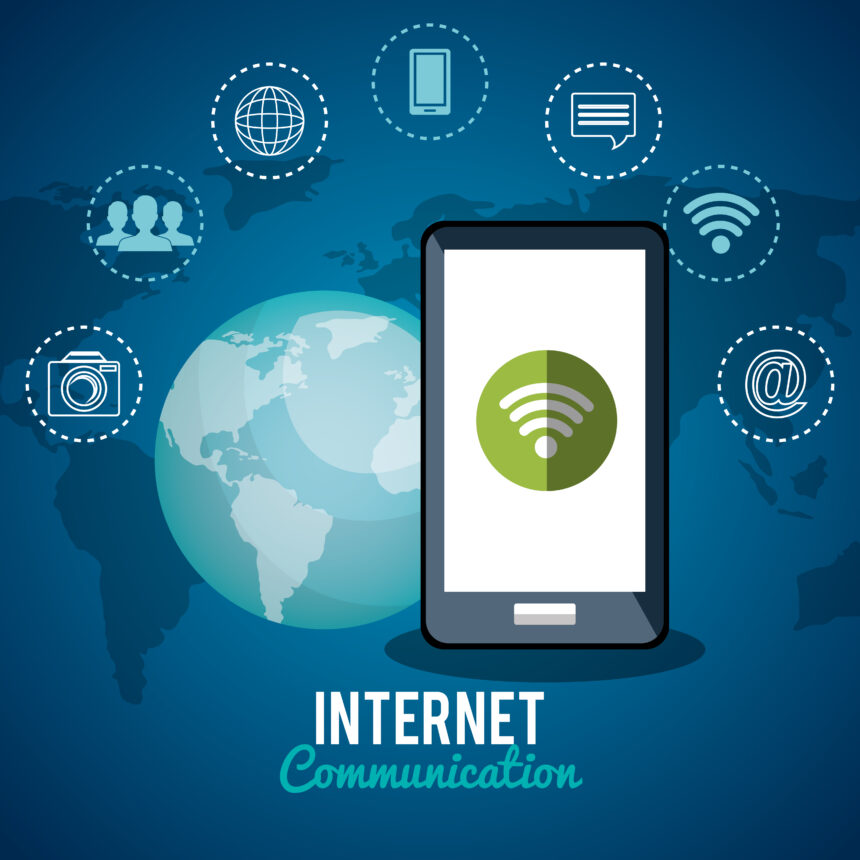Image by studiogstock on freepik
Wireless technology, particularly Wi-Fi, has brought about a significant transformation in the way we exchange data and interact with the internet. In this comprehensive guide, we’ll delve into the ins and outs of wireless communication, its various types, and its future.
The Genesis of Wireless Communication
Wireless communication transmits data without the need for physical connections, instead using electromagnetic signals. The journey of wireless technology started in the early 20th century with the advent of radiotelegraphy, which employed Morse code or other coded signals for radio communication.
As technology advanced, modulation allowed the transmission of voice and music wirelessly, and the medium was aptly named radio. The signals in wireless communication are carried using electromagnetic waves over a communication path.
The foundation for the current wireless networking was laid in the early 1970s with the launch of ALOHAnet in Hawaii. This network depended on ultra-high frequency signals to transmit data across the islands, serving as the precursor for Ethernet and the development of the first wireless standard, 802.11.
Evolution of Wireless Features
Over the past 15 years, wireless communication has seen significant evolution, especially after the ratification of the 802.11ac and 4G standards. With each new generation, wireless features have evolved from transferring data at rates of 54 Mbps to operations requiring gigabits of data to complete.
This continual evolution and advancement in wireless technology have led to an increase in demand for professionals specializing in wireless networking. Various wireless certification programs, like those offered by Cisco and the Computing Technology Industry Association, equip individuals with the necessary skills to maintain and support the future of wireless systems.
Understanding Wireless Networks
A wireless network is essentially a group of multiple devices where data is sent and received over radio frequencies. A key distinction between wireless and wired networks is that the latter requires a physical connection for communication, whereas wireless networks eliminate the need for dedicated wired cabling.
These networks include some form of radio transmission for broadcasting and receiving wireless signals, typically via antennas. Different wireless networks use diverse frequency ranges of the spectrum. Within the spectrum, different channels help reduce the risk of congestion within a given spectrum frequency.
Wireless Devices and Equipment
There’s a wide array of wireless equipment available today that enables users to stay untethered from wires. These devices range from cellular phones and cordless telephones to global positioning systems and cordless computer peripherals. Even laptops and tablets are now Wi-Fi-enabled, providing wireless connectivity.
Variety of Wireless Networks
Wireless networks cater to different needs and come in various types, such as:
Wireless LAN: A WLAN uses radio technology in place of wires to connect nodes along the network. Wi-Fi is the transmission method used to communicate over a WLAN via wireless access points (APs) that enable connectivity with endpoint devices.
Wireless Wide Area Network: Commonly referred to as mobile broadband, WWANs use cellular technologies to create a wireless network that spans a large geographic distance.
Fixed Wireless: This serves as a means to deliver last-mile internet connectivity to households and businesses over airwaves, rather than through wired fibre or cable television connections.
Wireless Personal Area Network: WPAN is generally enabled with short-range wireless technology, such as Bluetooth, to connect with keyboards, mice, headphones, and other devices.
Wireless Mesh Network: A WMN is created by connecting the wireless nodes installed at each user’s location. This design is decentralized and straightforward because each node only has to transmit as far as the next node.
Cellular Networks in Wireless Communication
Several types of cellular networks are used for wireless communications, with the modern ones being defined in terms of which generation of wireless standard they support. These include 2G, 3G, 4G/LTE, and 5G networks, each offering increased bandwidth, signal quality, and data speeds over their predecessors.
Advantages and Challenges of Wireless Technology
Wireless technology offers several benefits, including cost-effectiveness, high-performance access to network resources, and novel services like location tracking, IoT deployments, and remote diagnostics. However, it also has its fair share of challenges like ensuring adequate coverage and signal strength, securing the network against threats, and
troubleshooting issues in the network.
Wi-Fi vs. Wireless Networking
It’s crucial to understand that Wi-Fi is a specific subset of wireless communications defined by a set of technical specifications outlined by the IEEE under the designation 802.11. These wireless security protocols work in different ways to secure enterprise networks.
The Future of Wireless Technology
Wireless communication is now an integral part of enterprise networking. The work is currently underway to develop 6G, the next cellular standard, which promises low latency and throughput and capacity capabilities engineered to surpass 5G. As capacity and performance characteristics supported by these standards converge, wireless communications will enable users to switch seamlessly between Wi-Fi and cellular connectivity.


